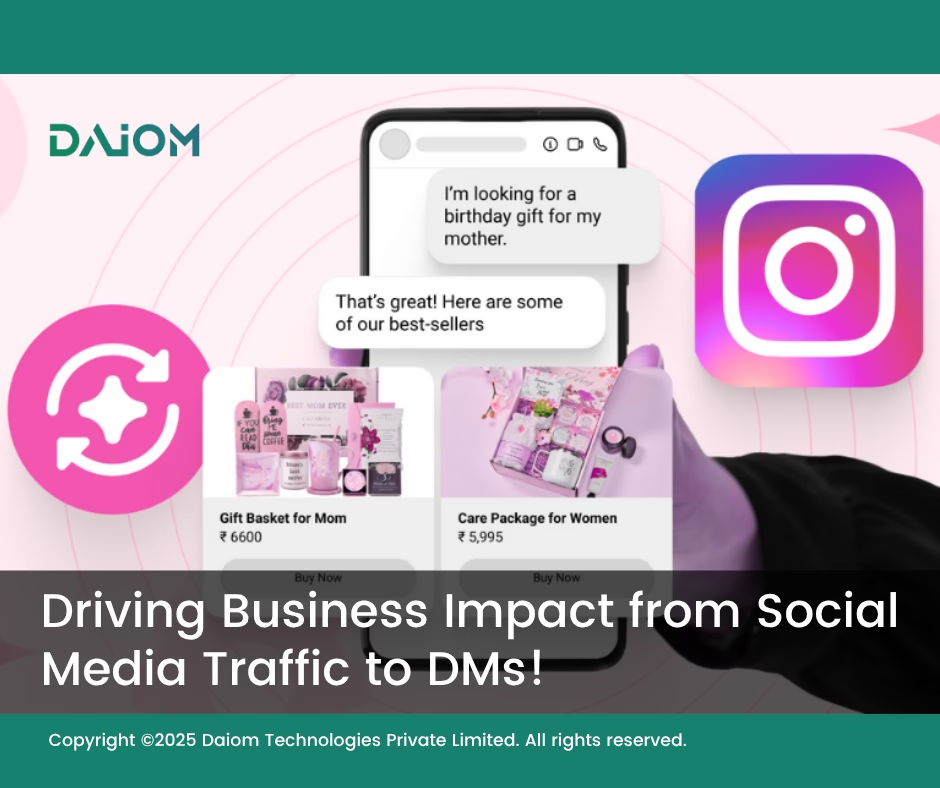Marketing teams are often focused on running ads and managing social media, but when I speak to many marketing managers, one thing is clear: they’re always thinking about the business impact.
They ask themselves, What is the business impact of social media? Many are caught up in metrics like likes and shares, but the real question is, how is it driving meaningful results?
We’ve been thinking about this for a long time, and we’ve identified a key framework to drive business impact—it starts with getting clicks.
Learn more – Driving Business Impact through Social Media Marketing
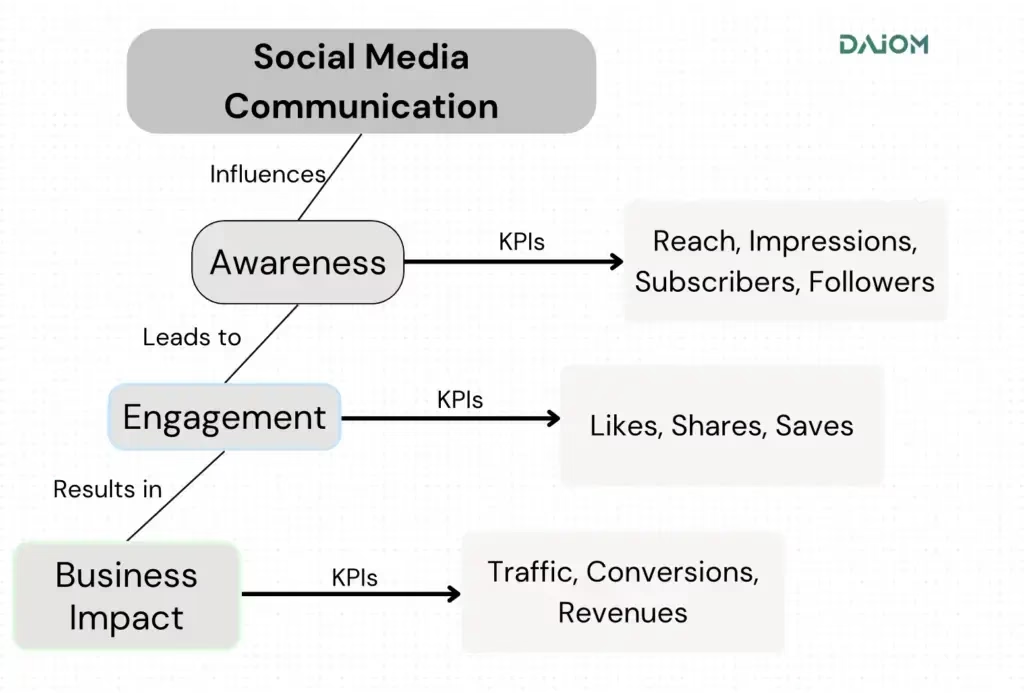
On platforms like Facebook, you can post a link directly, but Instagram makes it harder. You can only place it in the bio, and even then, it rarely gets noticed. This is why establishing a link to your site is crucial.
Once you establish that link, the next step is getting traffic to your website. There are three main ways to do this, and one of the most interesting methods is using direct messages (DMs).
With rising engagement through DMs, brands are feeling the pressure. Answering each query manually is no longer scalable. Missed messages mean lost customers, and slow replies mean missed revenue.
That’s where DM automation tools step in—helping you instantly reply to messages, share product links, capture leads, and even trigger follow-up messages.
In this blog, we will explore why DM automation tools are essential today, how they help transform business workflows, and what leading tools like ManyChat, Bik, and Gupshup offer to the market.
“Messaging is the new social media. The way customers interact with brands has shifted from public posts to private conversations, and businesses that fail to adapt risk being left behind.”
— Mark Zuckerberg, Meta CEO (2023 earnings call)
Table of Contents
1. What is the need for DM Automation today?
DM automation has become a must because social media isn’t just about posts and likes anymore — it’s now full of nonstop messages.
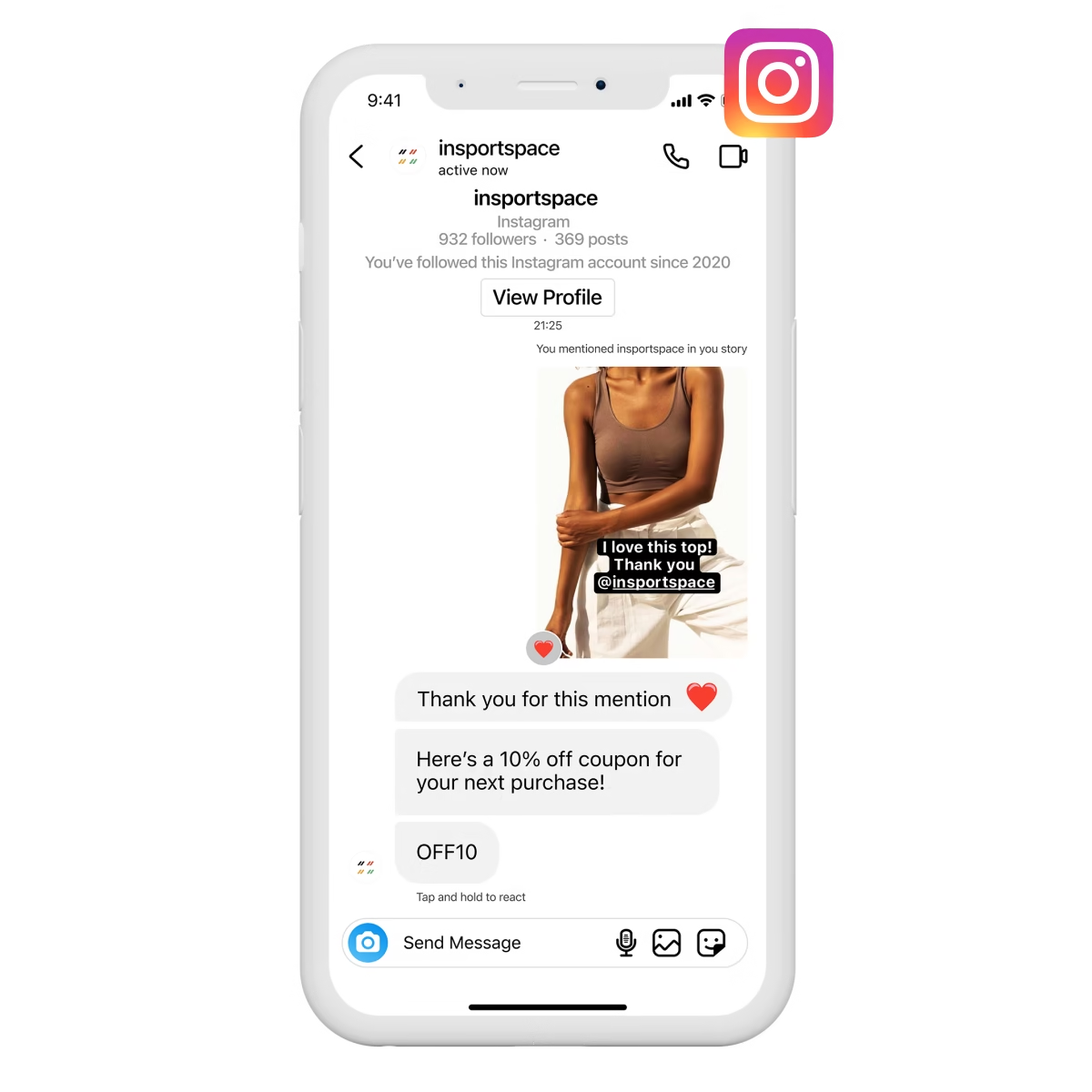
To handle this rising activity, brands and creators need smart tools that help them manage conversations, save time, and turn chats into real sales.
These are the key reasons:
- Users spend 2.5 hours per day on social media. Social media is the new TV, dominating people’s daily time.
- Businesses rely heavily on social media. Over 20% of marketing budgets are allocated to social media efforts.
- Social media ads are getting expensive. CPC (Cost Per Click) and CTR (Click-Through Rates) are rising by 25% annually.
- In Instagram, organic traffic is becoming harder to achieve. Competing for attention has become more challenging.
- Traditional traffic-driving methods are limited. Stories and Bio Links are among the old-school tactics.
- Success metrics are focused on followers and engagement. Yet, these alone don’t measure true business impact.
- DM and commenting strategies are gaining traction. By using these methods, businesses find it easier to directly reach customers and share product links.
2. Who’s Doing Well with DM Automation?
DM automation works best in sectors where conversations drive conversions.
But when it comes to brands, most are still lagging behind. It is due to poor engagement. Many brands focus heavily on content but forget to create opportunities for conversation.
If people aren’t replying to stories or commenting on posts, there’s nothing to automate. DM automation can only work if you’re driving real interaction. Without that, it’s like setting up a shop with no footfall.
Here are some sectors doing it well:
- Education businesses have been quick to adopt this. They use DM automation to handle admission queries, send course brochures, answer FAQs, and even schedule demo classes—without needing a human on standby 24/7. It’s helping them respond faster, build trust, and convert interest into enrollments.
- Real estate marketers are also leveraging DMs to capture leads instantly. Whether it’s an inquiry about a property, a brochure request, or a site visit appointment, automation ensures no message gets missed and every prospect gets a quick response.
- Influencers and creators are using DM flows to sell digital products, share affiliate links, or offer exclusive content. They’re converting followers into buyers—right inside the inbox.
3. Why Not Rely on Traditional Tools?
Many brands still rely on old methods like bio links, story swipe-ups, or paid ads to drive conversions.
However, these tactics come with significant limitations:
- Bio Links: These have low visibility and depend on users actively clicking through. Many users simply overlook them, resulting in fewer conversions.
- Story Swipe-Ups: Stories disappear after 24 hours, meaning brands need to constantly refresh their content to maintain visibility, which can be time-consuming and less effective.
- Paid Ads: While still a popular choice, paid ads are becoming increasingly expensive, with digital ad costs rising by over 25% year over year. This makes it harder to maintain a sustainable ROI.
- Organic Posts: Although valuable, organic posts have limited reach, often confined to a brand’s existing followers, meaning they miss out on broader audience engagement.
On the other hand, Direct Messages (DMs) provide a more personal, real-time, and interactive approach.
Unlike static methods, DMs allow for two-way conversations, which help build trust and rapport with customers.
This personalized interaction can lead to stronger conversions, as it fosters a deeper connection with potential buyers.
4. What Do DM Automation Tools Do?
DM automation tools solve several pain points:
- Instant Responses: Automatically reply to incoming messages, reducing wait times and improving user experience.
- Conversation Routing: Handle simple queries with bots and escalate complex issues to human agents.
- Lead Capture and Nurturing: Collect details from users, qualify leads, and move them smoothly through the sales funnel.
- Integrated Workflows: Connect DMs with your CRM, email marketing, or e-commerce tools for a seamless backend process.
Example of DM Automation-

5. Top 4 DM Automation Tools for Instagram and WhatsApp
Below are 4 leading tools — ManyChat, Bik, Gupshup, Respond.io, and Wati — that help brands and creators automate DMs, boost engagement, and streamline customer conversations across channels.

5.1 ManyChat
Founded in 2015, ManyChat started as a simple chatbot on Telegram, aiming to transform how businesses connect with customers over messaging apps.
Today, it supports over 1 million businesses worldwide and is considered one of the top players in the chat marketing and automation space. Its feature-rich platform, especially the Instagram DM Automation and visual Flow Builder, has made it essential for brands wanting to enhance engagement, drive leads, and simplify communication.
It supports integration with 60+ apps across marketing, e-commerce, and CRM platforms — enabling brands to automate across different touchpoints. You can also customize templates or create new ones using AI by simply chatting with the system.
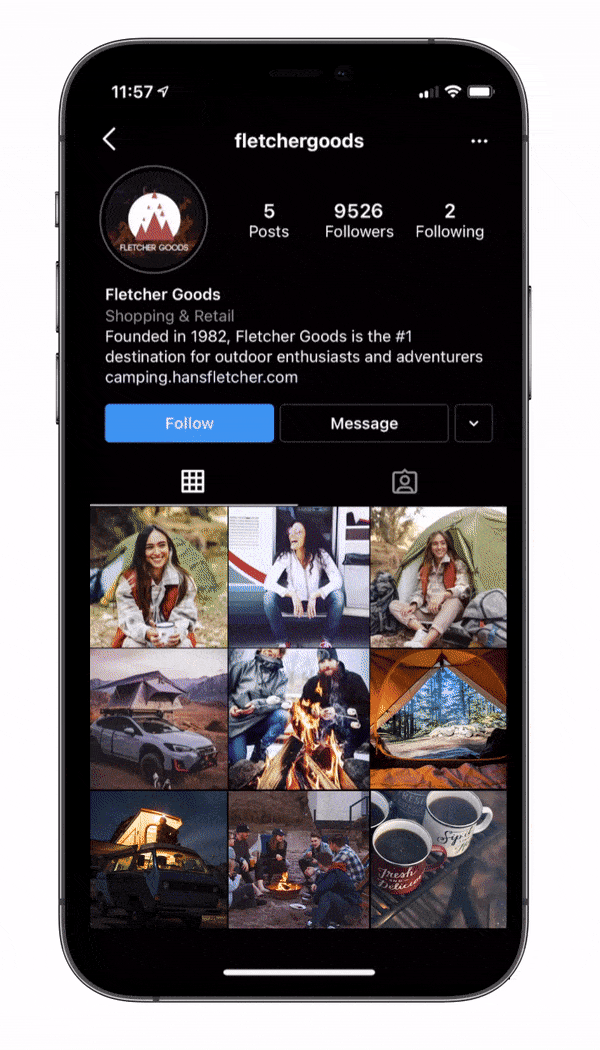
Why Do People Love it?
ManyChat stands out because it does not just automate responses — it lets you build full customer journeys. You can set up flows, segment audiences, run promotions, and connect the tool with popular platforms like Shopify, HubSpot, or Google Sheets.
Its visual flow builder makes automation feel intuitive, even for non-technical teams, and its strong Instagram and WhatsApp integrations give it a leading edge.
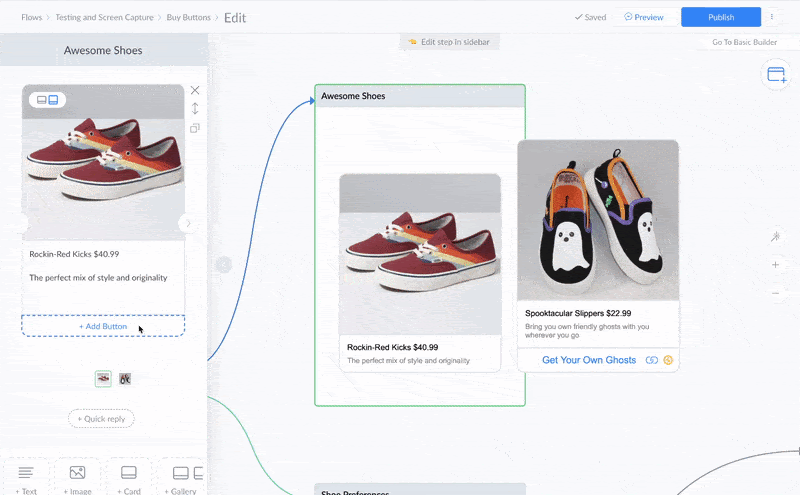
Key Features
- Automates Instagram DMs, comments, automate stories, and WhatsApp chats
- Visual drag-and-drop builder for setting up conversation flows
- E-commerce integrations (Shopify, WooCommerce, BigCommerce)
- Send promotional broadcasts, drip campaigns, or trigger-based messages
- Keyword triggers (for example, auto-DM when someone comments “WIN” or “INFO”)
- Analytics to track open rates, clicks, and conversions
- One-month free pro trial for advanced features
Best Use Cases
- Influencers: Run giveaways, collect leads, and send product recommendations automatically
- Small Businesses: Handle FAQs, manage sales inquiries, and push promo offers through DMs
- E-commerce Brands: Automate order confirmations, upsell messages, and abandoned cart reminders
Example: A fitness influencer launches a giveaway post. ManyChat automatically messages everyone who comments “JOIN,” collects their email, and guides them through the signup process. Later, it can send follow-up offers or workout plans, keeping the audience engaged. All these steps without leaving the app.
5.2 Bik
Bik focuses strongly on WhatsApp automation, although it also offers Instagram support. It is designed to help businesses streamline high-volume WhatsApp interactions — from simple customer queries to advanced sales processes — all while maintaining a smooth experience between automated bots and human agents.

Why Do People Love It?
Bik stands out because it goes beyond basic WhatsApp messaging.
It offers powerful tools like catalog sharing, payment options, advanced query routing, and seamless bot-to-human handovers. This makes it a top choice for businesses that rely heavily on WhatsApp to handle orders, resolve customer issues, or send real-time updates.
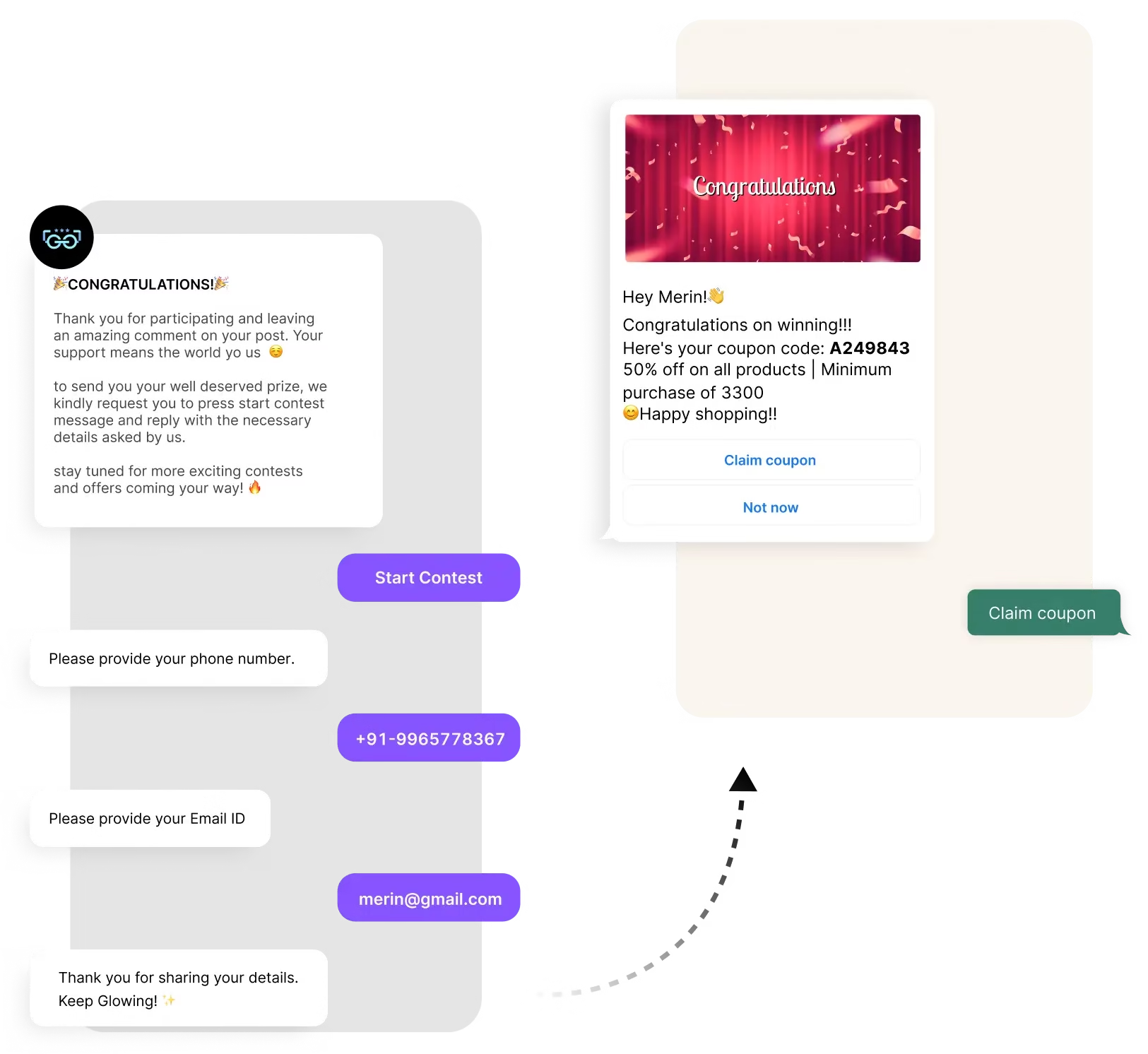
Its dashboard and analytics help teams track performance, improve conversations, and manage customer journeys efficiently.
Key Features
- Strong WhatsApp integration with product catalog sharing and payment tools
- Chatbots that handle FAQs, order inquiries, and common service requests
- Advanced routing to direct complex queries to the right team or agent
- Smooth transition between automated bot interactions and live human support
- Centralized analytics dashboard to monitor conversation performance and outcomes
Best Use Cases
- E-commerce Businesses: Automate order confirmations, delivery updates, and product inquiries
- Local Shops and Service Providers: Let customers browse catalogs, place orders, and get real-time support
- Customer Support Teams: Manage large volumes of WhatsApp chats, ensuring timely responses and accurate routing
Example: A brand uses Bik to automate its WhatsApp ordering system. Customers can browse, place their orders, receive instant confirmations, and even make payments — all without requiring manual staff input.
Meanwhile, if a customer has a special request or issue, Bik smoothly routes them to a human agent for personalized assistance.
5.3 Gupshup
Gupshup is an established name in the messaging automation space, providing simple bot solutions for WhatsApp and Instagram.
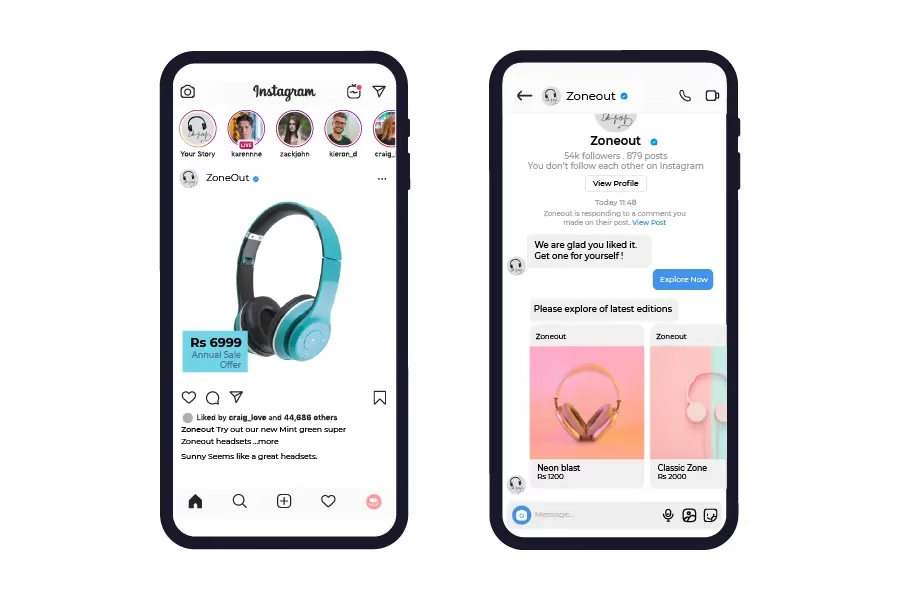
Why Do People Use It?
Gupshup is valued for its simplicity and affordability. It’s a good fit for businesses that need only basic automated replies or straightforward chatbot setups without requiring deep integrations or advanced workflows.
Key Features
- Supports WhatsApp and Instagram messaging
- Simple bots for automated responses and FAQs
- Basic templates for quick chat bot setup
Best Use Cases
- Small Businesses: Automate simple customer replies on WhatsApp or Instagram
- Basic Service Providers: Set up lightweight bots for handling inquiries or appointment bookings
5.4 Wati
Wati is a WhatsApp Business API platform built for companies looking to scale their WhatsApp communication efficiently.
Known for its speed of setup and enterprise-grade capabilities, Wati has become a go-to tool for brands aiming to deliver seamless customer experiences over WhatsApp.
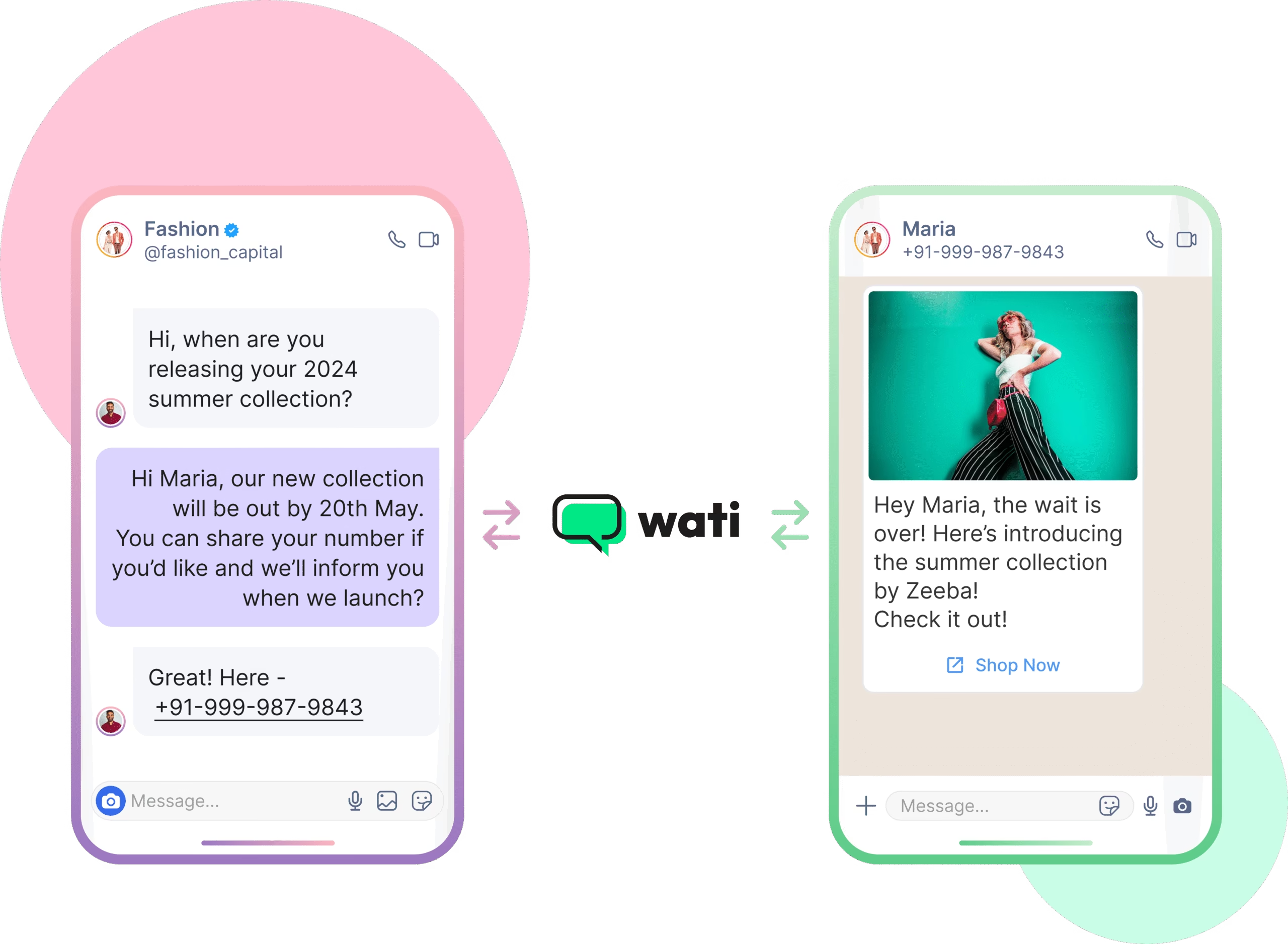
Why Do People Love It?
Wati is helpful when it comes to balancing automation and human support.
It lets teams quickly automate repetitive interactions like onboarding or order updates, while its agent dashboards make it easy to jump in for live support when needed.
Plus, its integrations with Shopify, Zoho, and other platforms help unify customer data and workflows.
Key Features
- Fast WhatsApp automation setup
- Broadcast promotional or informational messages to customer lists
- Agent dashboards for smooth human handovers
- Integrations with Shopify, Zoho, and CRM tools
- Customer tagging and segmentation for targeted outreach
Best Use Cases
- E-commerce Brands: Automate order updates, promotions, and customer service
- SaaS Companies: Streamline onboarding, provide instant product support, and nurture leads
Example: A SaaS company uses Wati to send automated onboarding messages to new WhatsApp subscribers, guide them through key product features, and offer live agent help for complex questions.
“The future of business communication is automated, personal, and instant — customers now expect real-time conversations, not wait times.”
— Gartner, 2024 Customer Experience Report
6. Conclusion
DM automation tools have become essential for businesses and creators who want to keep up with the increasing volume of messages on platforms like Instagram and WhatsApp.
By automating direct messages, businesses can provide instant responses, improve customer engagement, and streamline their workflows.
With tools like ManyChat, Bik, and Gupshup, brands can manage conversations efficiently, save time, and ultimately boost sales.
These solutions are sector-agnostic and can be used across industries — whether it’s tech, beauty, apparel, furniture, or any other.
As customer expectations for quick and personal communication grow, adopting DM automation tools is a smart way to stay competitive in today’s fast-paced digital landscape.
We help brands set up smart DM automation that drives results. Want in? Feel free to reach out to us at alibha@daiom.in.
For more insights and updates on the latest trends, follow DAiOM!
Subscribe to our Newsletter!


